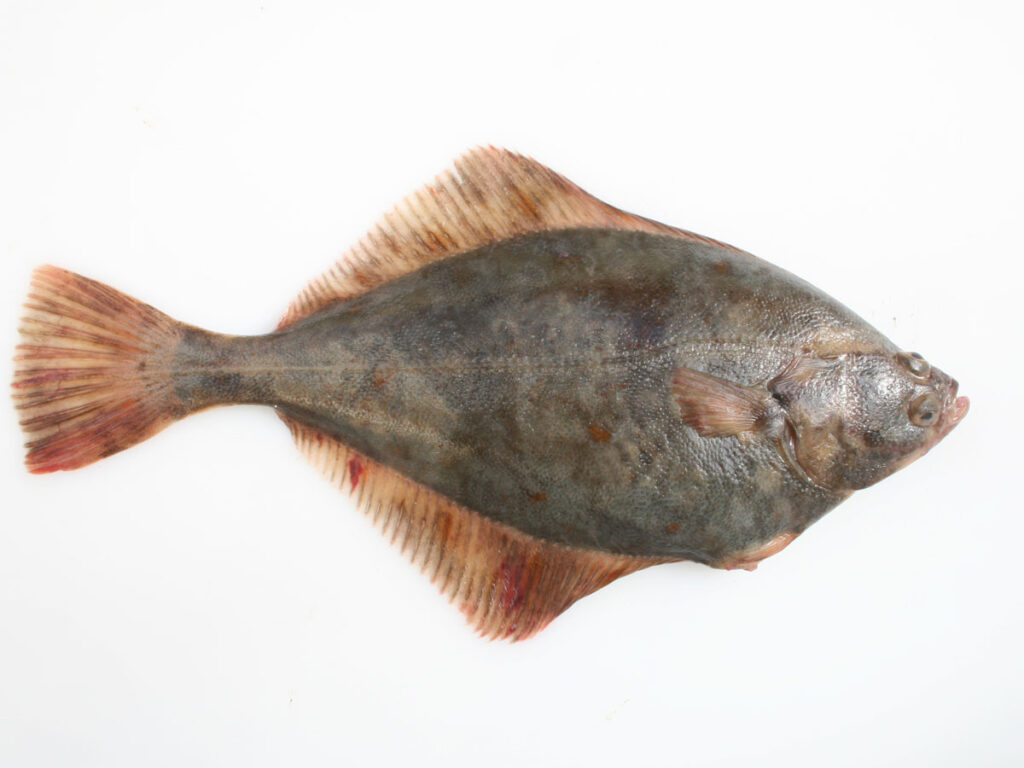
Last updated: 10 May, 2025 @ 12:11
Walk into any restaurant, grab the menu and check out the price of any flatfish.
Megrim sole, sand sole and plaice will be over £20, with lemon sole and Dover sole considerably more – and that’s not to mention brill and turbot. But where, one might ask, is the humble flounder? The answer: nowhere to be seen.
The Marine Conservation Society describes flounder, which is sometimes mischievously sold as ‘spring halibut’ (owing to a slightly similar appearance, only much smaller), as being ‘mostly discarded by fishermen due to their low commercial value and poor market demand’.
This bottom-dwelling fish is found all around the UK coastline, and are most common within just 50m of the shore. Yet amazingly, very little is known about this common fish.
This downloadable report by Newcastle University actually cites the lack of commercial demand as a factor in the knowledge gap. ‘The perceived lack of economic importance over the past decades has kept this species out of the scrutiny of the scientific community, and there are still many behaviours and annual events in which our understanding is still unclear,’ says the report.
Flounder exclusion
The unpopularity of the flounder – which you may also see at your fishmongers under the name of ‘fluke’ or ‘butt’ – extends to its exclusion from many cookbooks in which you’d might expect to find a flounder recipe or two.
Otherwise excellent books such as Mitch Tonks’ Fish (read our review), For the Love of the Sea by Jenny Jefferies, or even Floyd on Fish, make no mention of the flounder.
But why is this?

Flounder from beyond the surf line
One clue may come in where the fish chooses to live. You see, the flounder is common all around the coastline of the UK, but it particularly likes estuaries and can enter freshwater.
Estuaries are notoriously muddy places, and give the current state of Britain’s inland waterways, not particularly pleasant either.
Flounder from these habitats are said to taste like their surroundings – a little muddy.
However, flounder from beyond the surf line are considered a better fish.
There’s even a suggesting that purging a live flounder in freshwater will dramatically improve the taste.
Enjoyment of flounder
Having cooked, eaten and enjoyed flounder, we found the fish to taste pleasant, if a little mild (we’re not going to use the word bland). Thankfully, there was no sign of a muddy aftertaste.
We’re not alone in our enjoyment of flounder.
In the book Sea Fishing (available on Amazon) by the late Nick Fisher, flounder is described as being ‘delicious grilled with a well-massaged smear of butter, pan-fried, or backed with a splash of cider or wine’.
(Digressing slightly, Sea Fishing is not only a fantastic book for the angler, but also a great source of recipes for the home seafood cook).
‘Beautiful, prime fish’
Meanwhile, in Rick Stein’s television series Seafood Lovers’ Guide, Rick travels to Morecambe Bay for a spot of flounder fishing with local fisherman Michael Wilson.
On inspecting the catch, Rick finds ‘lots of flounder, beautiful prime fish’.
Discussing the low price he gets for his flounder, Michael Wilson tells Rick Stein: “People just want plaice. No one is bothered with flukes, really.”
Rick goes on to deep fry fillets of flounder with a costelloise sauce – which is similar to hollandaise but made with olive oil.
The finished dish looks stunning, the fillets wrapped in their golden brown, crispy overcoat.
However, it’s the words of Michael Wilson which leave a lasting impression.
“We’re a nation brought up on cod and chips. People won’t try any other sort of fish except for cod or haddock. To me, there’s no difference in a fluke to a plaice.”
Perhaps it’s time to give flounder a try and decide for yourself.
Further reading: Seafood Carbon Emissions Profiling Tool
If you’re a carbon-conscious consumer then you’ll love the new Seafood Carbon Emissions Profiling Tool released by Seafish.
Share this Fish Face Seafood Blog article.